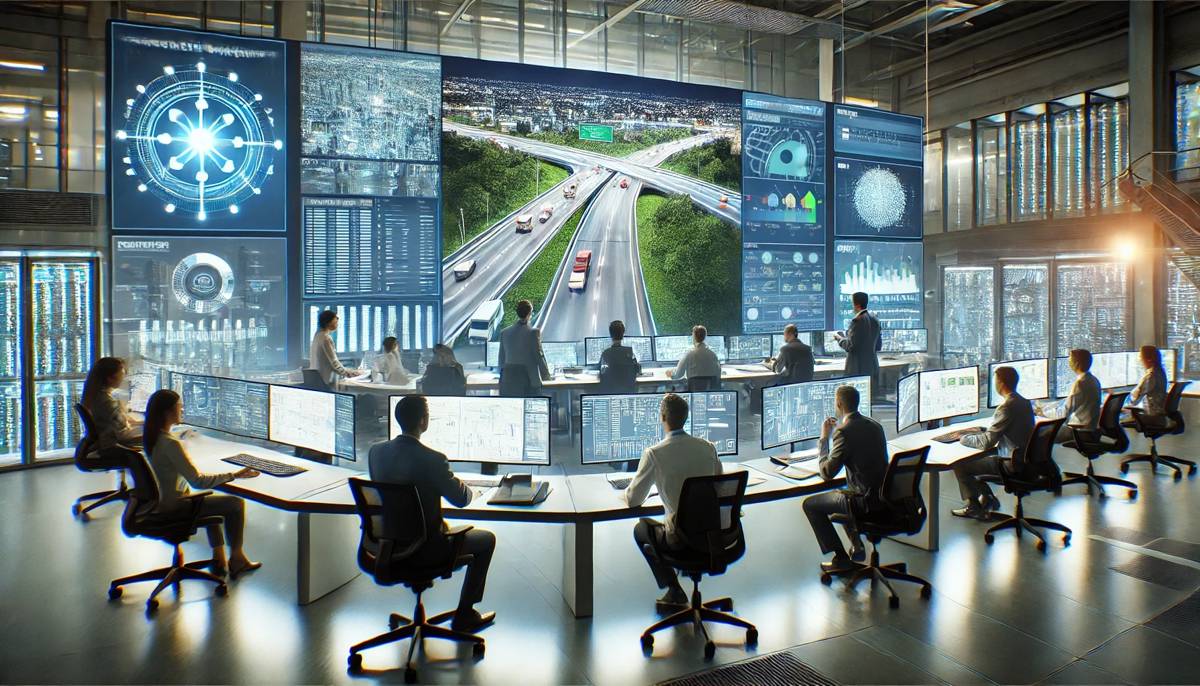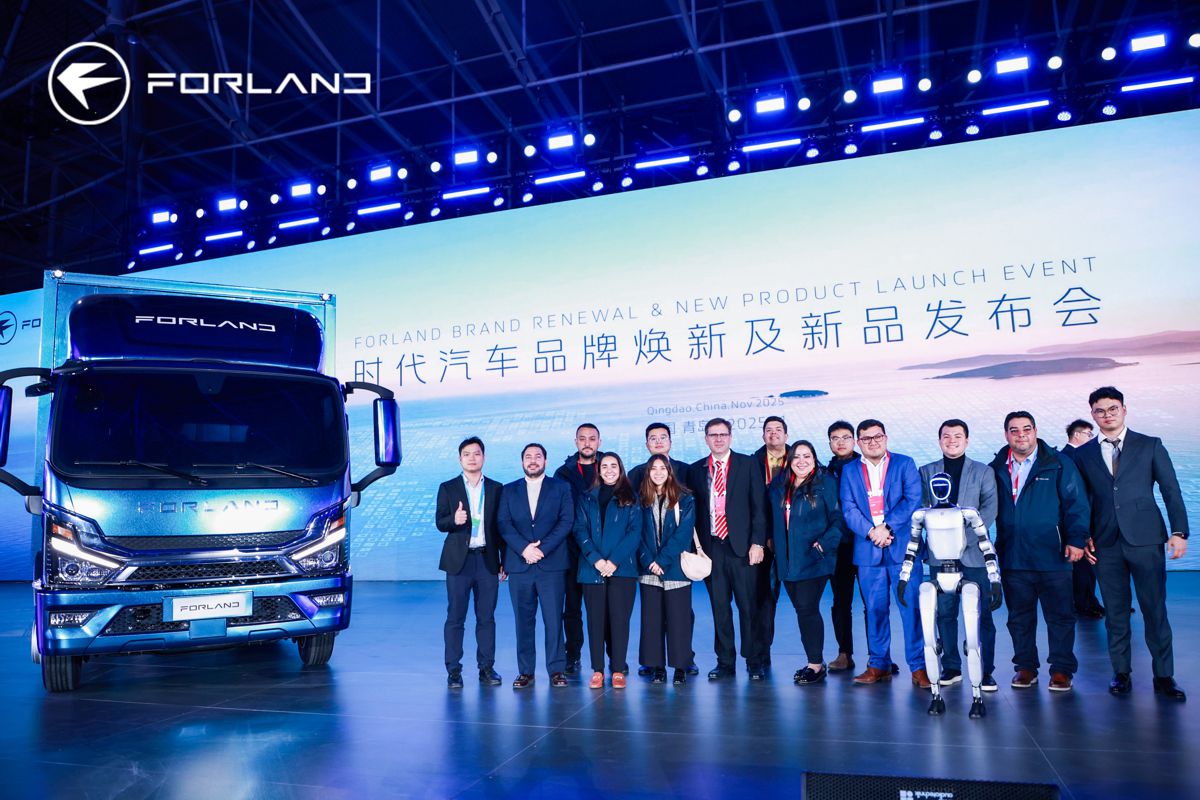Bentley Systems’ Role in Designing Next-Generation Road Infrastructure
In an age where infrastructure is at the heart of urban development and sustainability, technology is stepping up to redefine how roads and highways are planned, built, and maintained.
Bentley Systems, a leader in infrastructure software, is at the forefront of this transformation. Their suite of solutions—like Blyncsy, OpenRoads Designer, and SYNCHRO addresses the pressing needs of road safety, data management, and operational efficiency.
The demand for smarter, safer roads has never been more critical, especially as cities worldwide grapple with rapid urbanisation. In a detailed interview with Bibhuti Aryal from Bentley Systems, we explore how their innovative tools are reshaping transportation infrastructure and making our roads not just smarter, but safer.
A Partner in Infrastructure Evolution
Bentley Systems sees itself as more than just a software provider; they view their role as a trusted partner to infrastructure professionals. With urban centres expanding at unprecedented rates, the pressure on transportation networks is mounting. As Aryal noted: “We see our role as partners to infrastructure professionals who serve this absolutely critical industry. By leveraging data through open digital twins, we aim to unlock the full potential of data to improve project delivery and asset performance.”
Bentley’s tools are designed to enhance the efficiency of existing infrastructure, addressing the challenge that 95% of the roads we’ll use by 2030 are already in place. The focus now, Aryal emphasised is on optimising these assets to ensure they remain safe and resilient.
Urbanisation and Its Impact on Road Safety
One of the most significant trends Bentley is tackling is the rapid urbanisation occurring in both developed and developing nations. Aryal pointed out that while urban growth has lifted many out of poverty, it also strains existing infrastructure. “In less developed regions, people are moving to cities to access better livelihoods, but this influx puts immense pressure on transportation systems. That’s where smart infrastructure solutions become essential.”
This surge in population increases the demand for safe and efficient mobility solutions. According to the World Health Organization, over one million lives are lost annually to road-related accidents. Bentley’s commitment to integrating safety measures into every phase of infrastructure design is more vital than ever.

Harnessing Real-Time Data with Blyncsy
One of Bentley’s standout innovations is Blyncsy, a data-driven tool designed to enhance road safety and traffic efficiency. Blyncsy leverages crowdsourced data from dashcams and other sensors to provide real-time insights. This not only aids in traffic flow but also addresses safety concerns proactively.
Aryal elaborated: “Blyncsy collects data from various sources, including dashcams, to detect issues like potholes, damaged guardrails, or unclear lane markings. By anonymising this data, we ensure privacy while delivering actionable insights to improve road conditions.”
Bentley’s collaboration with Alaska DOT showcases Blyncsy’s capabilities. By using AI to analyse crowdsourced images, they were able to assess snow removal efforts and monitor street light outages. “Imagine being able to identify areas where zebra crossings have faded or where pedestrian signs are missing—all from crowdsourced data,” Aryal explained. This approach not only saves time but also enhances road safety by identifying and resolving potential hazards before they lead to accidents.
Enhancing Design with OpenRoads Designer
OpenRoads Designer is Bentley’s flagship software for road and highway design. The tool is built to integrate safety standards right from the conceptual stage, ensuring that projects comply with local and international regulations. According to Aryal: “It’s not just about drafting road layouts; it’s about designing with safety, collaboration, and efficiency in mind.”
The software supports the integration of real-world data, such as photogrammetry and geotechnical information, to give engineers a comprehensive view of the project area. This holistic approach helps in identifying potential challenges early on, reducing the need for costly rework during construction.
One of the significant benefits of OpenRoads Designer is its ability to streamline communication among stakeholders. “Over 60% of safety incidents on construction projects happen due to rework,” Aryal said. “By ensuring that designs are accurate from the get-go, we can significantly mitigate these risks.”
SYNCHRO is Revolutionising Construction Safety
While design is crucial, ensuring safety during the construction phase is equally vital. Bentley’s SYNCHRO software brings construction projects to life in a virtual environment before breaking ground. Aryal described SYNCHRO as: “a high-tech Gantt chart that allows you to simulate construction activities, sequence tasks, and visualise the entire project timeline.”
This predictive simulation helps contractors identify potential safety risks and optimise resource allocation. By running through different construction scenarios, engineers can adjust their plans to avoid conflicts, such as underground utility clashes or delayed material deliveries.
Bentley’s SYNCHRO has been instrumental in large-scale projects like the 138th Street Bridge in Manhattan. Here, multiple stakeholders used SYNCHRO’s digital twin capabilities to coordinate efforts, ensuring that the project stayed on schedule while maintaining safety protocols.

Leveraging Predictive Analytics for Safer Roads
The integration of AI and predictive analytics into Bentley’s software solutions enables transportation agencies to anticipate maintenance needs and optimise road layouts. Aryal noted: “With tools like Blyncsy and our asset analytics solutions, we can predict which parts of the road network require immediate attention, thus preventing accidents before they happen.”
By using AI-driven insights, agencies can focus their efforts where they’re needed most, such as areas with high accident rates or deteriorating infrastructure. This data-driven approach not only saves money but also improves road safety by ensuring that resources are allocated efficiently.
Bentley’s Acquisition of Cesium
As part of its relentless push towards smarter, more efficient infrastructure, Bentley Systems recently acquired Cesium, a move that significantly enhances their digital twin technology. With Cesium’s high-fidelity 3D geospatial capabilities, Bentley can now offer an even more immersive view of infrastructure projects, blending real-time data with visual accuracy that’s critical for effective planning and safety.
Bibhuti Aryal highlighted the value of this acquisition, noting: “With Cesium, we’re transforming how our users interact with digital twins by bringing together complex data sources into a single, interactive model. This allows for more informed decision-making, especially in challenging environments where terrain, existing structures, and underground utilities must be considered.”
By integrating Cesium’s technology, Bentley not only improves visualisation but also enhances the ability to plan, design, and maintain safer roadways—paving the way for future-ready infrastructure that supports autonomous vehicles and smart city initiatives.
Smart Cities and Interoperability
Smart city initiatives rely heavily on data from various departments and systems. However, the lack of interoperability between these systems often results in data silos. Bentley is tackling this challenge head-on by promoting open data standards and integrating third-party solutions into their digital twins.
Aryal highlighted the importance of openness: “Our focus on interoperability ensures that our software can communicate with existing systems, whether it’s GIS, asset management, or other industry-specific tools. This allows stakeholders to access all relevant information in real-time, leading to better decision-making.”
Bentley’s partnership with Google provides access to decades of geospatial data, enhancing the accuracy of their digital twins and enabling better planning and design for smart cities.

AI, Autonomous Vehicles, and Beyond
Looking ahead, Bentley Systems is investing heavily in AI and digital twins to transform the way infrastructure is managed. With the rise of autonomous vehicles, the need for well-maintained and clearly marked roads is more critical than ever. Aryal explained: “For autonomous vehicles to operate safely, they rely on accurate road markings and signage. Our technology ensures that these elements are kept up to standard.”
The company is also exploring the integration of generative AI into design processes, allowing engineers to automate repetitive tasks and focus on more strategic challenges. “By using AI to auto-generate designs and documentation, we’re freeing up engineers to tackle the complex problems that require human creativity,” Aryal said.
A Global Commitment to Safety and Standards
Bentley’s influence extends beyond software. The company actively collaborates with government agencies and industry bodies to set safety standards and advocate for the adoption of technology. Aryal emphasised: “Our mission is to ensure that infrastructure is not just functional but also safe and sustainable. By working with international standards bodies, we’re helping shape the future of transportation.”
Empowering the Workforce
Bentley Systems recognises that for all the advancements in infrastructure technology, it’s people who ultimately drive projects to success. Beyond supporting universities and training new engineers, Bentley is deeply committed to upskilling the existing workforce. Bibhuti Aryal elaborated on the importance of this initiative: “It’s crucial to bring experienced professionals up to speed with new technologies like AI and digital twins. These are tools that can significantly streamline workflows, but if the current workforce isn’t equipped to use them, we’re not tapping into their full potential.”
By investing in training programmes and upskilling efforts, Bentley ensures that seasoned engineers, project managers, and field operators can leverage the latest software tools to improve efficiency, safety, and sustainability in infrastructure projects. As Aryal noted: “Our goal is to help bridge the skills gap, enabling professionals who’ve been in the industry for decades to adapt to this new digital era. This not only boosts productivity but also fosters a culture of continuous improvement and innovation.”
Bentley’s commitment to lifelong learning extends to providing resources for users to master tools like Blyncsy, OpenRoads Designer, and SYNCHRO, ensuring that infrastructure professionals are prepared for the challenges of today and tomorrow.

Transforming Infrastructure for a Safer, Smarter Future
It’s clear that Bentley’s innovative solutions are setting the construction industry on a new path. From leveraging real-time data through Blyncsy to enhancing design processes with OpenRoads Designer and optimising construction workflows with SYNCHRO, Bentley is at the forefront of driving change.
Their recent acquisition of Cesium exemplifies their commitment to integrating cutting-edge technology into digital twins, enabling infrastructure professionals to visualise projects with unparalleled detail. As Aryal highlighted: “The combination of rich geospatial data with AI-driven insights is transforming how we design, build, and maintain the critical road networks that underpin our daily lives.”
By focusing on openness and interoperability, Bentley ensures that their tools can seamlessly integrate into existing workflows, helping cities and agencies tackle the challenges of rapid urbanisation, safety concerns, and the shift towards autonomous mobility.
Looking to the future, Bentley’s emphasis on training and upskilling both new entrants and seasoned professional will ensure that the industry will continue to thrive in an era of digital transformation. As Aryal aptly concluded: “The only way to truly future-proof infrastructure is by combining technology with the human expertise that drives our industry forward.”
With a relentless focus on safety, efficiency, and innovation, Bentley Systems is paving the way for a smarter, more resilient infrastructure landscape, one that not only meets today’s demands but also anticipates the needs of tomorrow.



















